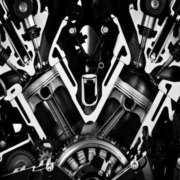Pre Purchase Marine Engine Inspection
If you are considering purchasing a boat with used Outboards, let our pre-purchase inspection put your mind at ease in regards to the condition of the engines. From the status of warranty to the condition of the lower unit oil, our pre-purchase inspection can help you determine whether the engine in good working condition.
Below is what is inspected and checked:
4 Stroke Engine Inspection
- Inspect Exterior of Engine for Damage / Abuse / Condition.
- Inspect Cowling Gasket for Water Tightness and Latches for Proper Function.
- Perform a Compression Check and Check Spark Plug Condition.
- Visually Inspect Powerhead for Abnormalities.
- Inspect Primer Bulb and Fuel Hose to Engine.
- Inspect Rigging Hose Condition and Connection to Engine and Boat.
- Test Run Engine.
- Check Smoothness of Engine at Idle and Higher RPMs.
- Check for Abnormal Noise.
- Check ECU for Active Trouble Codes.
- Inspect Timing Belt.
- Check Shifting of Gears – Forward, Neutral, Reverse.
- Check Propshaft Alignment.
- Inspect Lower Unit and Propeller for Impact Damage.
- Check Propeller for cracks.
- Check Hub Integrity.
- Check Gear Oil in Lower Unit for Water Intrusion or Excessive Metal.
- Check Power Trim and Tilt Operation.
- Check Overboard Indicator for Proper Peeing of Cooling Water.
- Check Engine Oil Level and Condition.
- Record Engine Hours on Gauge and On Engine ECU, if Applicable.
- Check Steering for Stiffness, Looseness, Leaks, etc… Check Condition / Operation of Keyswitch and Warning Horn System.
- Note Condition of Gauge Displays.
2 Stroke Engine Inspection
- Inspect Exterior of Engine for Damage / Abuse / Condition.
- Inspect Cowling Gasket for Water Tightness and Latches for Proper Function.
- Perform a Compression Check and Check Spark Plug Condition.
- Visually Inspect Powerhead for Abnormalities.
- Inspect Primer Bulb and Fuel Hose to Engine.
- Inspect Rigging Hose Condition and Connection to Engine and Boat.
- Test Run Engine.
- Check Smoothness of Engine at Idle and Higher RPMs.
- Check for Abnormal Noise.
- Check ECU for Active Trouble Codes.
- Check Shifting of Gears – Forward, Neutral, Reverse.
- Check Propshaft Alignment.
- Inspect Lower Unit and Propeller for Impact Damage.
- Check Propeller for cracks.
- Check Hub Integrity.
- Check Gear Oil in Lower Unit for Water Intrusion or Excessive Metal.
- Check Power Trim and Tilt Operation.
- Check Overboard Indicator for Proper Peeing of Cooling Water.
- Check Oil Injection System for Oil Transfer.
- Check Engine Oil Tank for Contamination.
- Check Condition of Oil Tanks.
- Record Engine Hours on Gauge and On Engine ECU, if Applicable.
- Check Steering for Stiffness, Looseness, Leaks, etc… Check Condition / Operation of Keyswitch and Warning Horn System.
- Note Condition of Gauge Displays.





